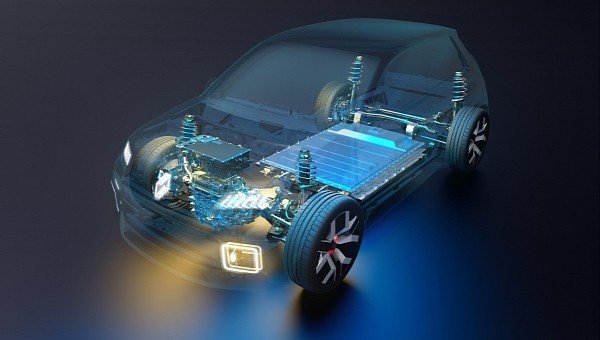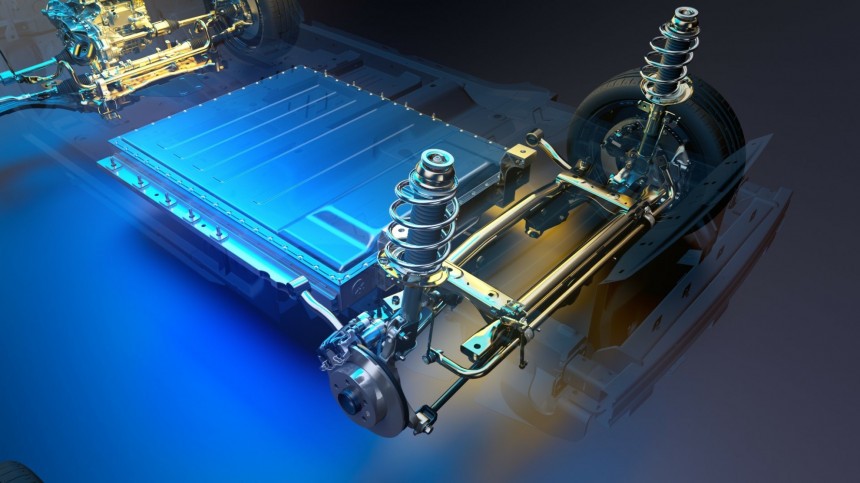In January 2021, Renault unveiled the Renault 5 prototype, a modern, electrified twist on the Renault 5 launched in 1972. The French automaker announced today that it began endurance testing and fine-tuning the CMF-B EV platform.
The electric Renault 5 is scheduled to be unveiled next year, and Renault is offering a glimpse into the EV’s development. The company is testing its first nine prototypes as mules. Their exteriors do not yet look like the future model, but their platform, the power train, and the battery are the same components you’ll find on the upcoming Renault 5.
The testing phase ensures the mules will go through static and dynamic fine-tuning. They will tackle various terrains, from the snowy, low-grip conditions in Arvidsjaur, Sweden, to the average grip conditions at the Renault technical centers in Lardy and Aubevoye, France.
Whether we want to or not, we put tremendous stress on our vehicles. That’s why Renault uses all the means and tools necessary to reproduce the hardships of daily driving. The Renault site in Aubevoye spans 613 hectares, featuring 35 tracks covering 60 km (37 miles), two wind tunnels, 42 test lines, and 18 corrosion chambers. All this is hidden from the public within 272 hectares of forest.
The far north of Sweden is a popular destination for testing among automakers, as it’s home to extreme cold conditions where the vehicles can be put under extreme stress. You can find many snowy roads and frozen lakes, and temperatures can reach –30 degrees Celsius (–22 degrees Fahrenheit) on some winter days. No testing facility can simulate these genuinely challenging conditions.
Renault will test mechanical performance, monitoring the various components closely. Other onboard systems, such as heating, defrosting, and demisting, are also analyzed. Moreover, the shock absorbers, brakes, and ESC (Electronic Stability Control) are observed to see if they perform as intended.
The CMF-B EV platform is a direct descendant of the CMF-B used for the Clio and Captur. Renault took 70% from the latter to ensure the upcoming platform provides best-in-class performance. Compared to the architecture of the ZOE, the CMF-B EV platform is 30% cheaper to manufacture.
But there’s more to it than that – the new modular platform is easier to develop and optimizes the performance of next-gen B-segment EVs. It enables the birth of a new generation of electric vehicles, as its adjustable tracks and wheelbase can fit different body types and styles.
The Renault 5 EV will feature an optimized chassis with a multi-link rear axle, a component typically used in superior vehicle segments. What’s more, the batteries will be housed under the floor, allowing for improved dynamic performance via a lower center of gravity.
Compared to its ICE equivalent, the CMF-B EV platform engine compartment is more compact, as the parts used for an electric motor are smaller. The one used in the Renault 5 takes inspiration from the synchronous motor used mainly on the ZOE and Megane E-Tech electric. However, it’s roughly 20 kg (44 lbs.) lighter. Moreover, its construction doesn’t use rare earth metals, lowering both the cost of large-scale production and the environmental impact.
Three major components comprise the new engine’s internal architecture: the DC/DC converter (transforms the battery’s 400 V into 12 V), battery charger, and accessory box, which manages power distribution.
The new battery pack comes with some improvements – the 12-module battery will be transformed into a 4-module setup with a simpler architecture, which also translates into a lower weight, 15 kg (33 lbs.) lighter, to be precise.
The testing phase ensures the mules will go through static and dynamic fine-tuning. They will tackle various terrains, from the snowy, low-grip conditions in Arvidsjaur, Sweden, to the average grip conditions at the Renault technical centers in Lardy and Aubevoye, France.
Whether we want to or not, we put tremendous stress on our vehicles. That’s why Renault uses all the means and tools necessary to reproduce the hardships of daily driving. The Renault site in Aubevoye spans 613 hectares, featuring 35 tracks covering 60 km (37 miles), two wind tunnels, 42 test lines, and 18 corrosion chambers. All this is hidden from the public within 272 hectares of forest.
The far north of Sweden is a popular destination for testing among automakers, as it’s home to extreme cold conditions where the vehicles can be put under extreme stress. You can find many snowy roads and frozen lakes, and temperatures can reach –30 degrees Celsius (–22 degrees Fahrenheit) on some winter days. No testing facility can simulate these genuinely challenging conditions.
Renault will test mechanical performance, monitoring the various components closely. Other onboard systems, such as heating, defrosting, and demisting, are also analyzed. Moreover, the shock absorbers, brakes, and ESC (Electronic Stability Control) are observed to see if they perform as intended.
But there’s more to it than that – the new modular platform is easier to develop and optimizes the performance of next-gen B-segment EVs. It enables the birth of a new generation of electric vehicles, as its adjustable tracks and wheelbase can fit different body types and styles.
The Renault 5 EV will feature an optimized chassis with a multi-link rear axle, a component typically used in superior vehicle segments. What’s more, the batteries will be housed under the floor, allowing for improved dynamic performance via a lower center of gravity.
Compared to its ICE equivalent, the CMF-B EV platform engine compartment is more compact, as the parts used for an electric motor are smaller. The one used in the Renault 5 takes inspiration from the synchronous motor used mainly on the ZOE and Megane E-Tech electric. However, it’s roughly 20 kg (44 lbs.) lighter. Moreover, its construction doesn’t use rare earth metals, lowering both the cost of large-scale production and the environmental impact.
Three major components comprise the new engine’s internal architecture: the DC/DC converter (transforms the battery’s 400 V into 12 V), battery charger, and accessory box, which manages power distribution.
The new battery pack comes with some improvements – the 12-module battery will be transformed into a 4-module setup with a simpler architecture, which also translates into a lower weight, 15 kg (33 lbs.) lighter, to be precise.




























